Northern Ireland has been working on a series of upgrades to its railway infrastructure throughout the past five to six years, with works spanning track renewals, upgrades to the ticketing system, and the construction of brand new stations. Three new station buildings have been opened since 2019 as a result of this investment in the cities of Portrush, Derry, and Belfast, with a fourth due to open later this year in Belfast as well.
I was last in Northern Ireland some six years ago and I missed the unveiling of these new station buildings. A recent visit to NI this year became the perfect opportunity to get an in-person look at these new additions to the NI Railways network. In short, I was left feeling quite impressed.
Portrush railway station (Opened July 2019)
The first of the new station buildings to open was in the popular seaside town of Portrush on the northern Antrim coast. The new Portrush station, constructed between 2018 & 2019, is designed by Gregory Architects, and incorporates NI Railways’ new design language – a heavy use of right angles, floor-to-ceiling glass walls, coloured facade panels, and an overall theme that is best described as “corporate”. The result is a modern and somewhat boxy station building fit for the 21st century, adding a much needed touch of colour under the typical grey Irish skies.
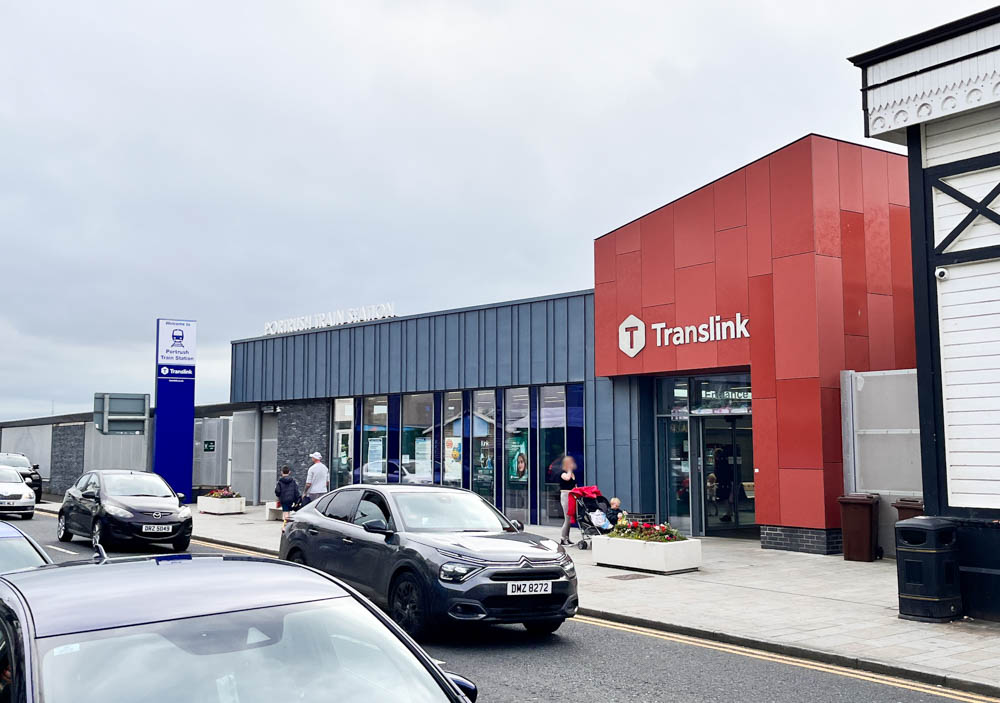
The interior consists of a compact ticket hall that manages to fit in a ticket desk, NI Railways’ new ticket machines, seating, and toilets. The space is brightly lit in the day thanks to a skylight in the roof, and the result is a very bright and airy space.
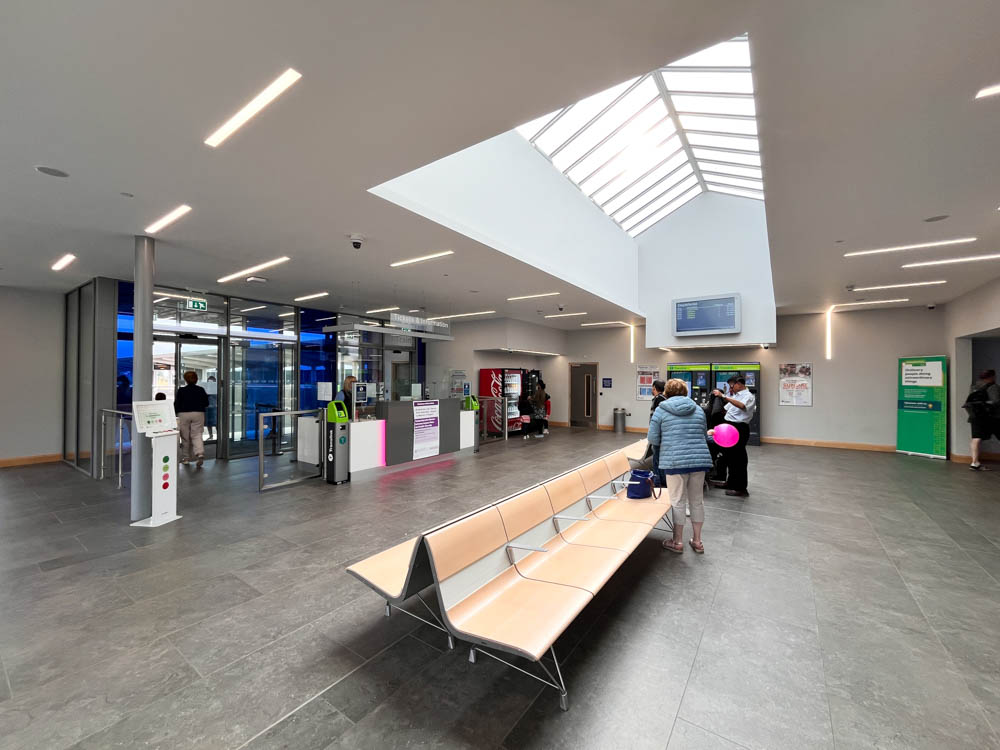
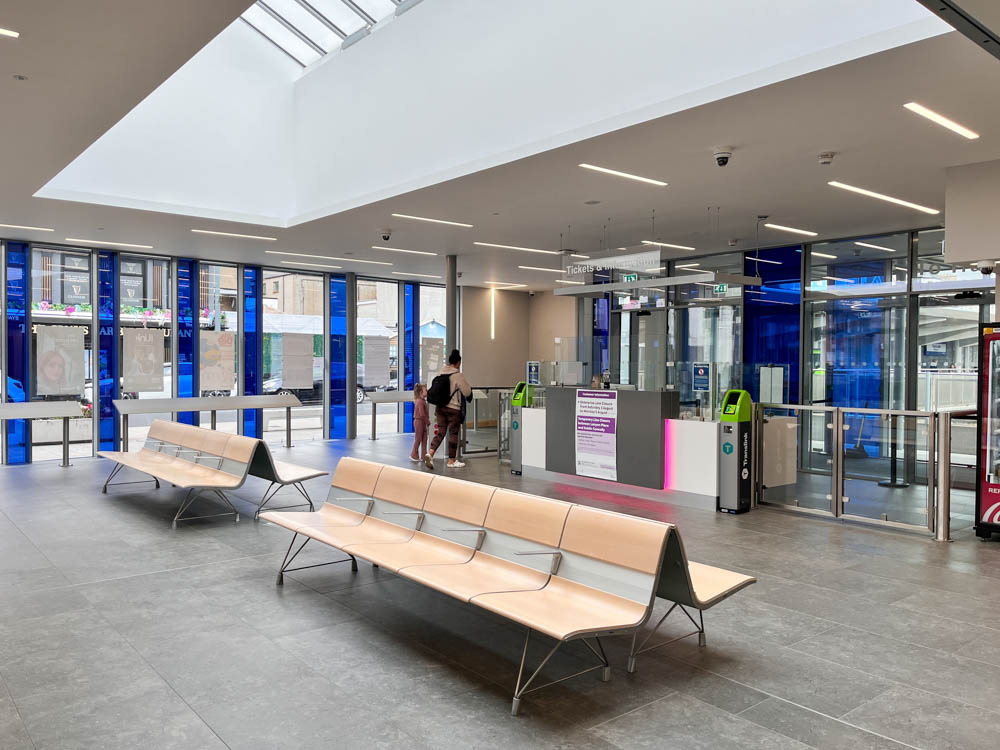
NI Railways’ ticketing upgrades have seen the installation of new ticket machines and ticket validators at all stations. Some stations will also receive new ticket gates (see York Street station below), but the new Portrush station is not one of them. Passengers travelling through Portrush station will have their tickets validated by station staff, and travel cards have to be tapped on the ticket validators before entering the platform.

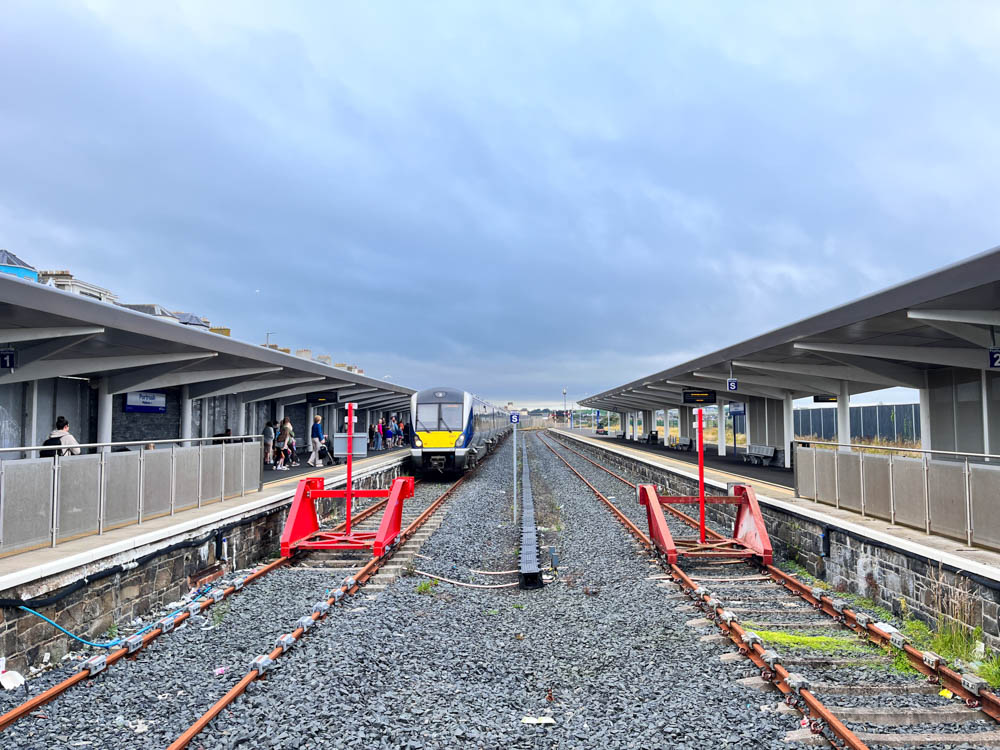
Portrush may have gotten itself a new train station building, but the entire line from Coleraine to Portrush is still running on legacy semaphore signalling. This is great for trainspotters and those who love vintage tech (the edge of the platforms give a good view of the signals), but this means capacity on the Portrush line remains severely limited.
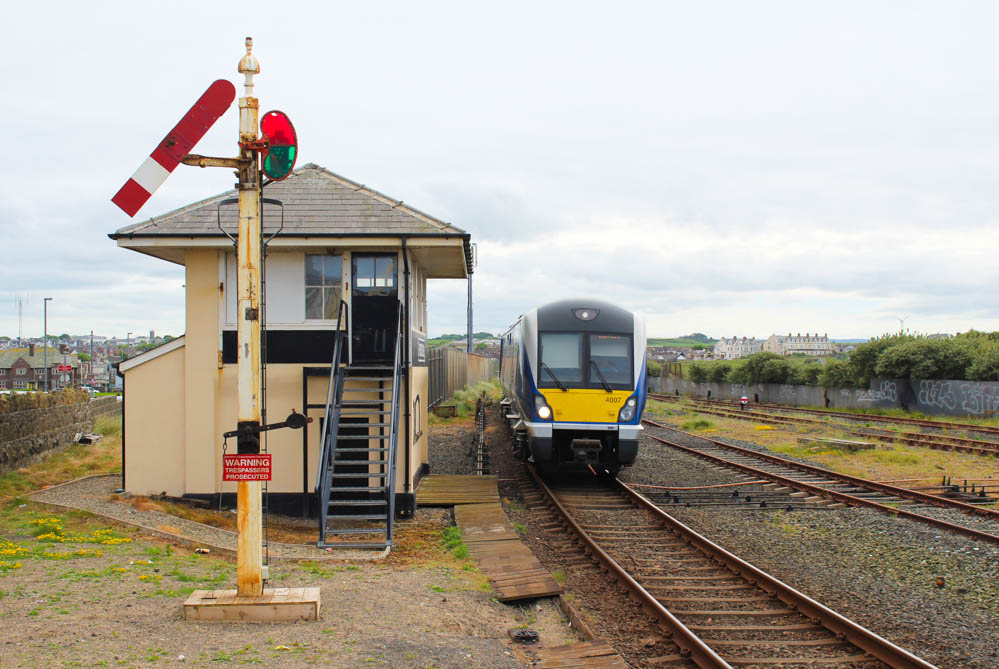
What came before at Portrush?
To better understand how big of an upgrade this is for Portrush, it is important to have a look at what came before. The Portrush station complex first opened in 1855 with a rather handsome mock-Tudor style station building, and three platforms covered by a train canopy. All of these gradually fell out of use over time – the train canopy was removed and a soulless concrete box replaced the 1855 station building in active use as the ticket office.

The 1855 station building still survives as a retail space, though, but a plain concrete box was always a poor replacement. I got to experience the older iteration of Portrush station during my first visit in 2017, and it was frankly quite sad – completely unsuitable for any town, much less NI’s premier beach town.
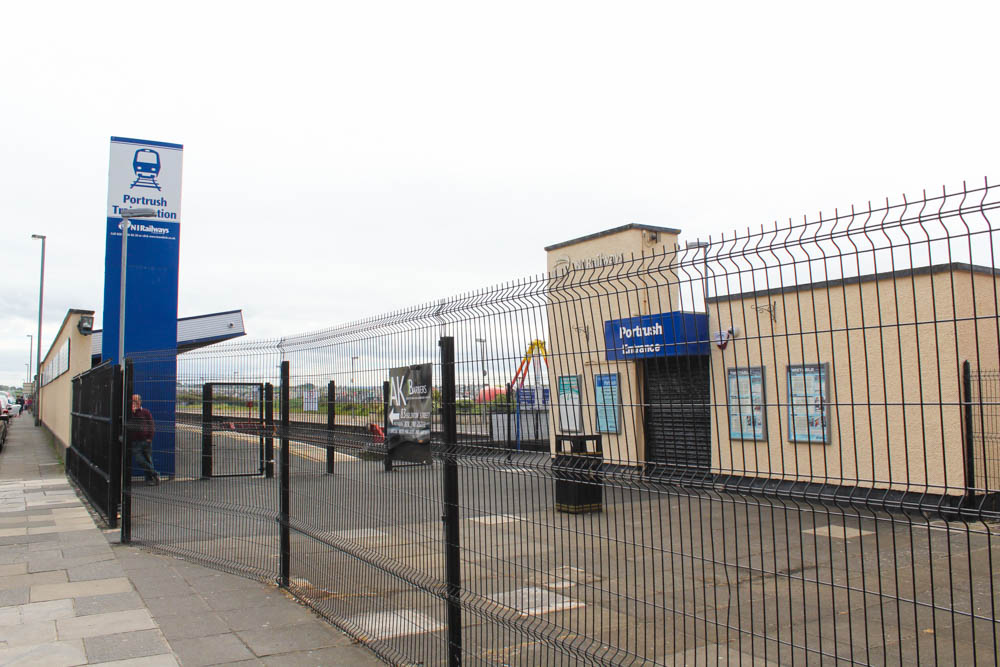
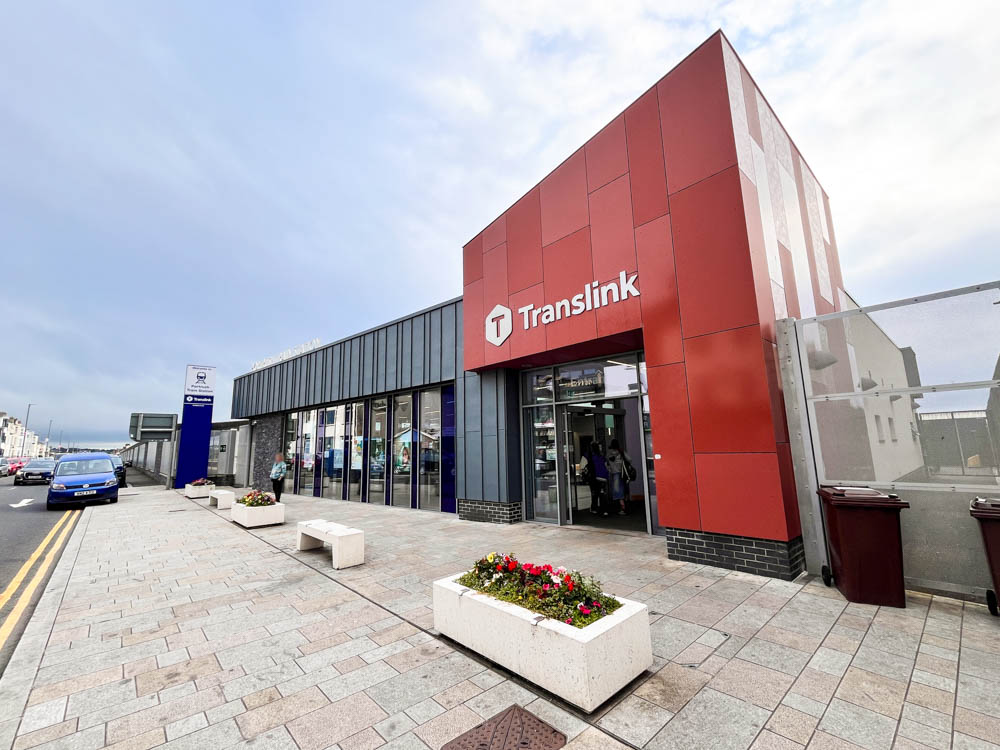
Derry railway station / North West Transport Hub (Reopened October 2019)
“What is old is new again” is the theme in Derry (alternatively known as “Londonderry” to some). October 2019 saw the reopening of the old 1874 Belfast & Northern Counties Railway (BNCR) station, revamped into a modern rail and bus hub fit for the 21st century.
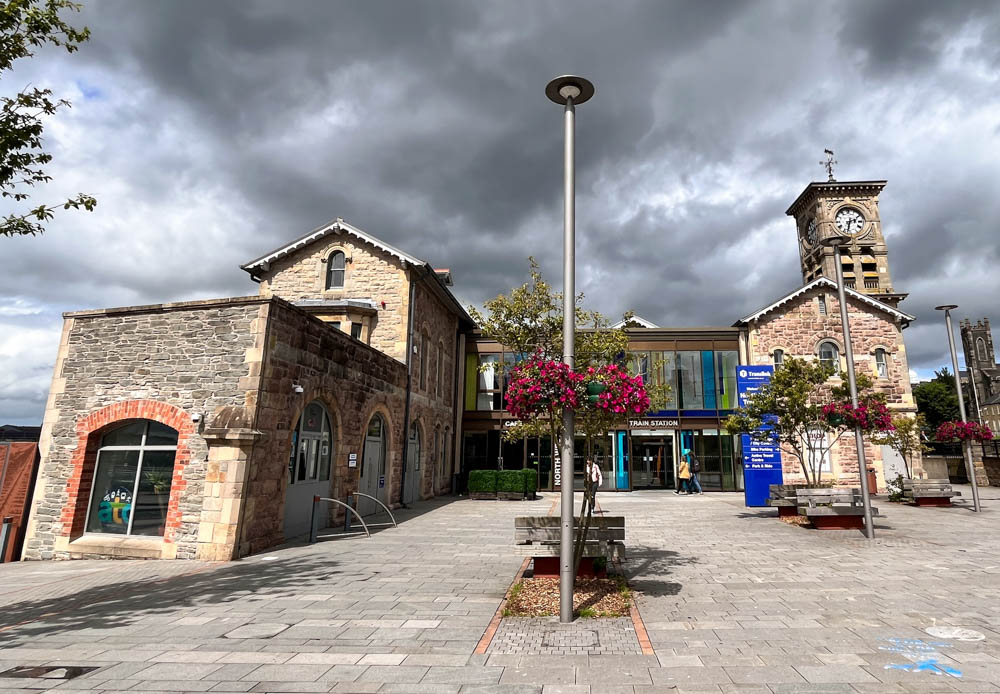
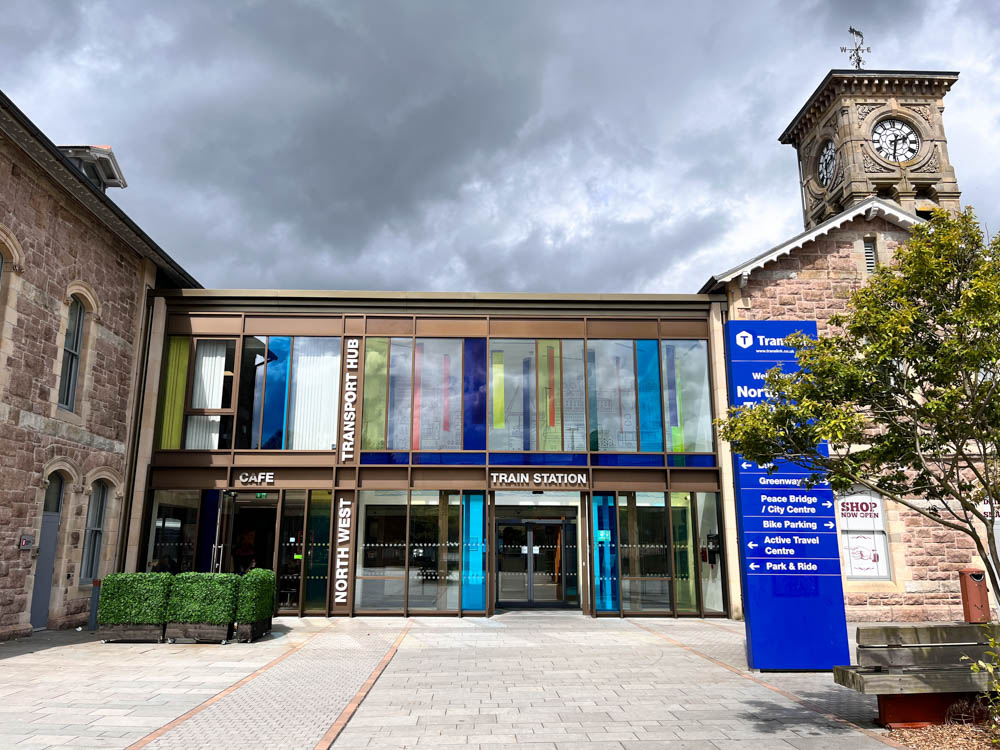
What used to be the train shed now hosts the ticket hall, a café, and a waiting area – all of which can handle more passengers than the station’s predecessor. Care was also taken with the station’s heritage fixtures, including the memorial to Great Northern Railway (Ireland) employees who lost their lives during both World Wars.
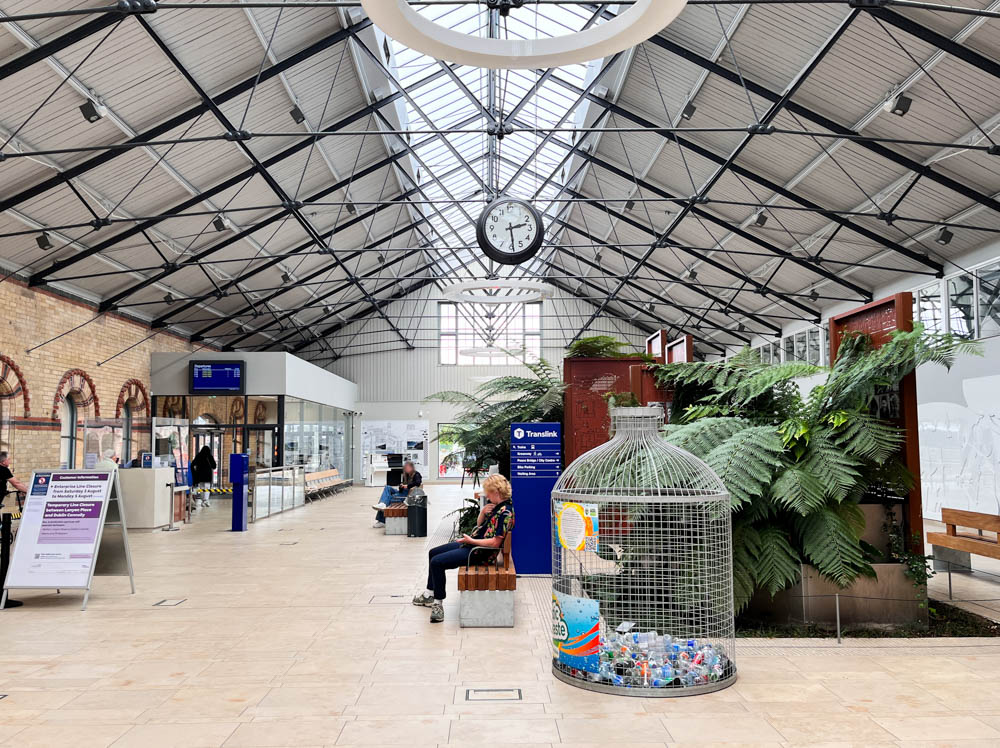
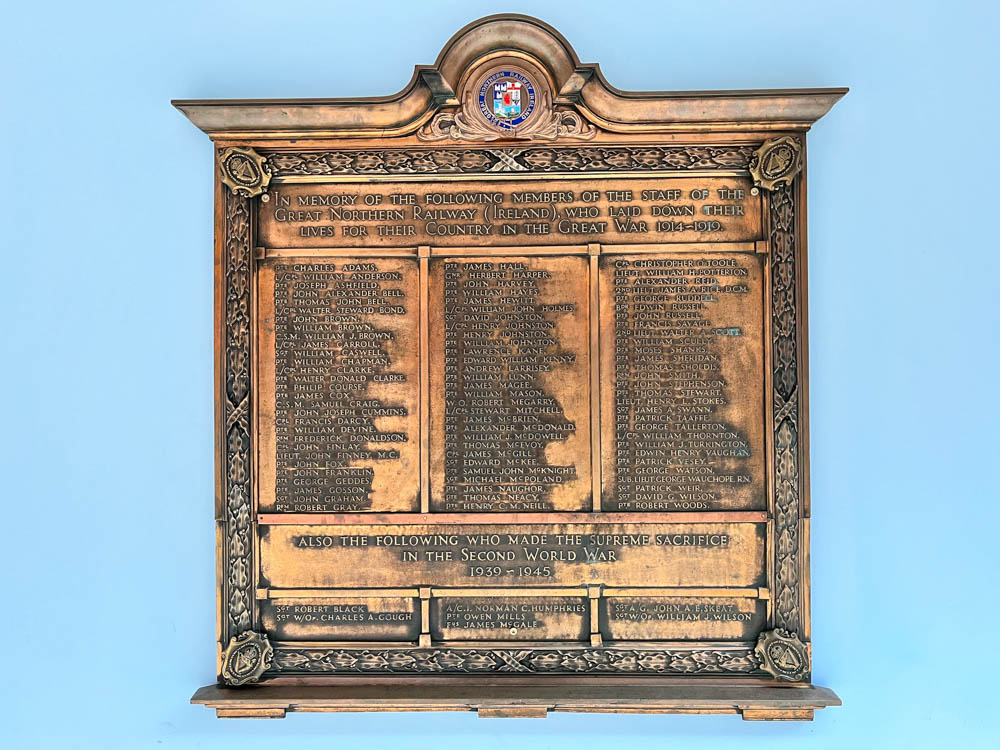
Two new platforms sheltered by canopies were also built, leading out from the revamped train shed and to the side of the station building. The platforms themselves get new station boards (this time showing “Derry~Londonderry” instead of just “Londonderry”), and new seating.
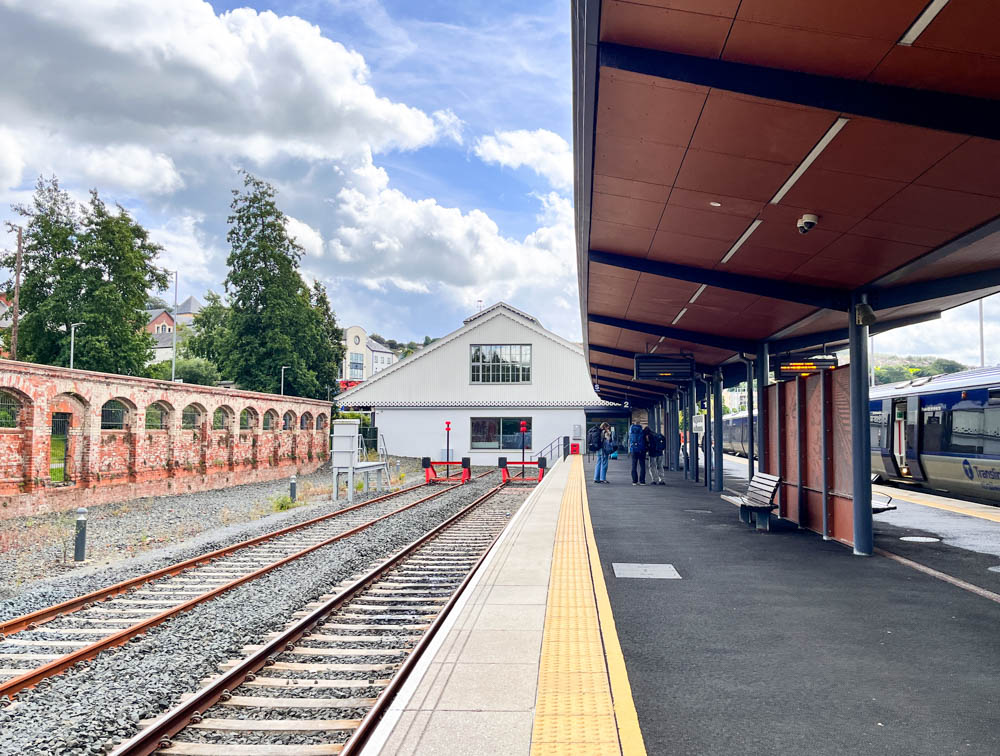
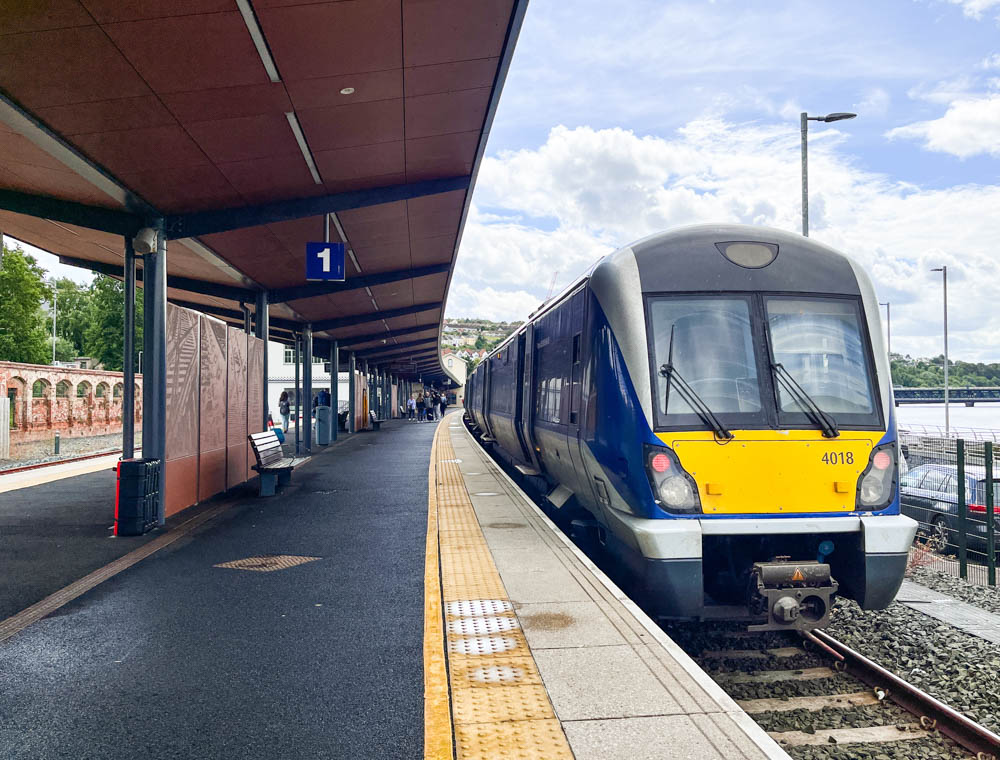
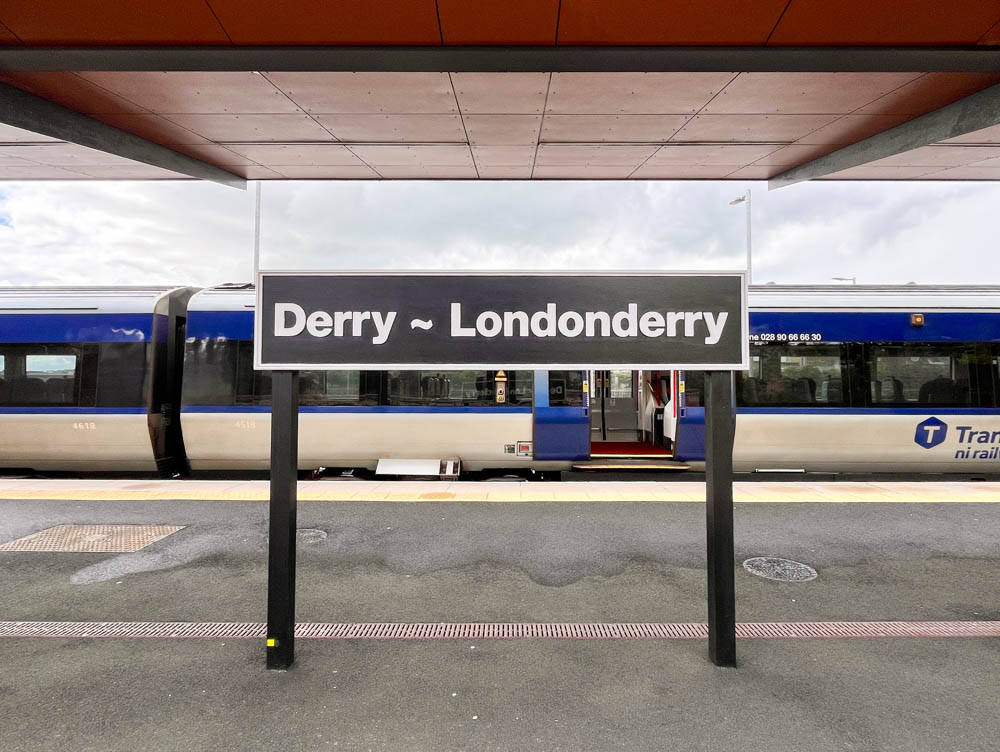
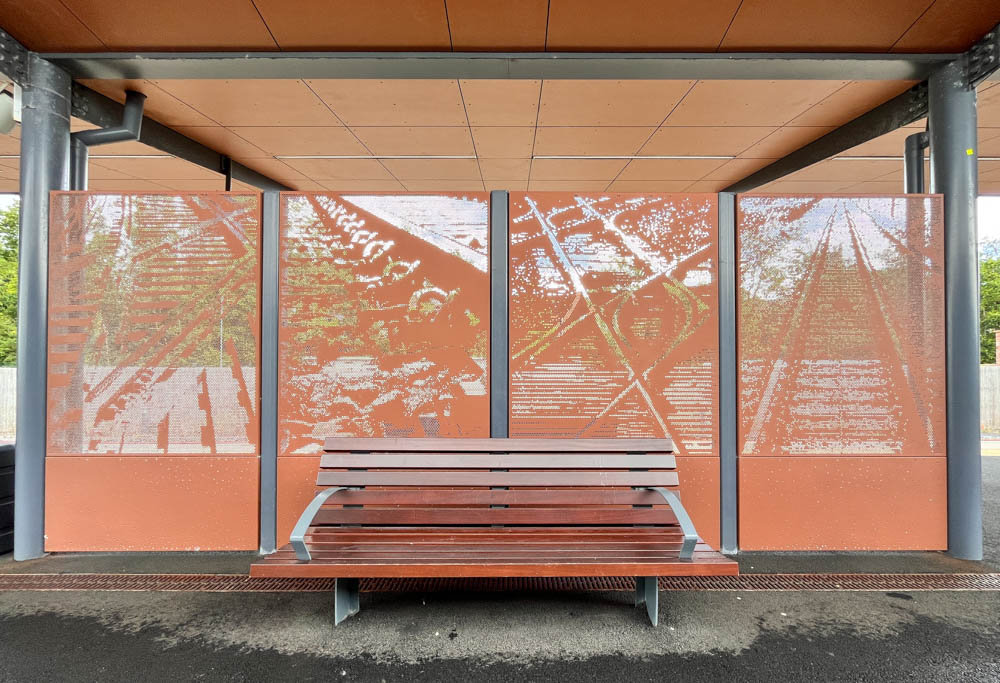
The new station hosts Translink’s new ticket machines, but currently hasn’t been fitted with the ticket gates that York Street has received (see below). There absolutely is space for ticket gates, so it remains to be seen how Translink configures the internal space.
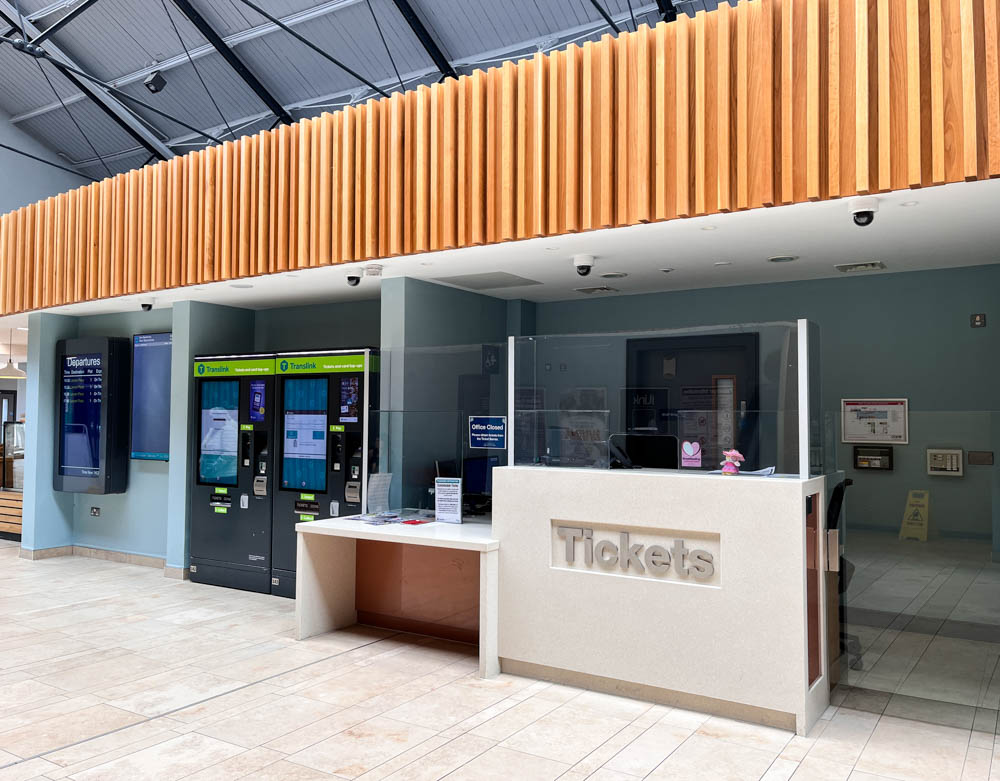
What came before at Derry?
The city of Derry has seen a multitude of train stations throughout its history. The only one remaining in active service and the subject of this post is the “Waterside” station, named for its location in the neighbourhood on the southern side of the River Foyle.
The 1874 BNCR station was in continuous use for around 106 years, surviving cuts to the railway network and damage from bombings during the period of NI-wide conflict in the 1970s. It closed in February 1980 and was replaced by a new structure located further down the tracks. This 1980s iteration of the Waterside station was decidedly utilitarian, memorable for how unmemorable it was, and barely an appropriate gateway to the second largest city in the north of Ireland.
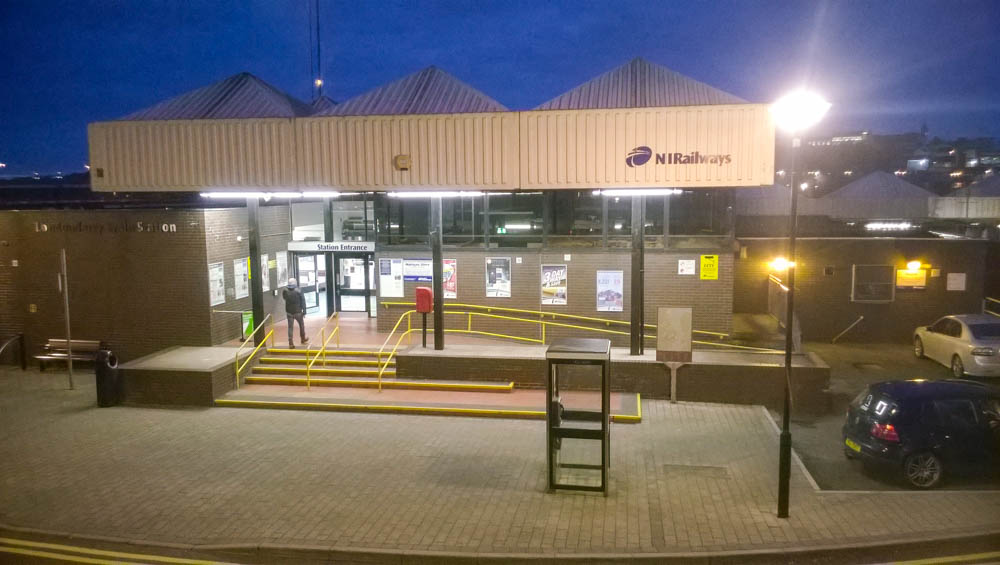
The 1980s station was clearly overdue for a replacement after over forty years in service, and I remember well its lethargy and the sense of misery on rainy days. Emerging as I did recently from the new station’s bright and airy hall, it was clear that the new station was a better fit for Derry’s future.
Belfast York Street railway station (Opened April 2024)
The new York Street station is the latest addition to Belfast’s transport scene, having opened in late April 2024 replacing Yorkgate station that sat on the same site. This new station is most decidedly modern (and boxy), with its externals decked out partially in rust coloured cladding, while the other side of the building is cladded in a grey-coloured material.
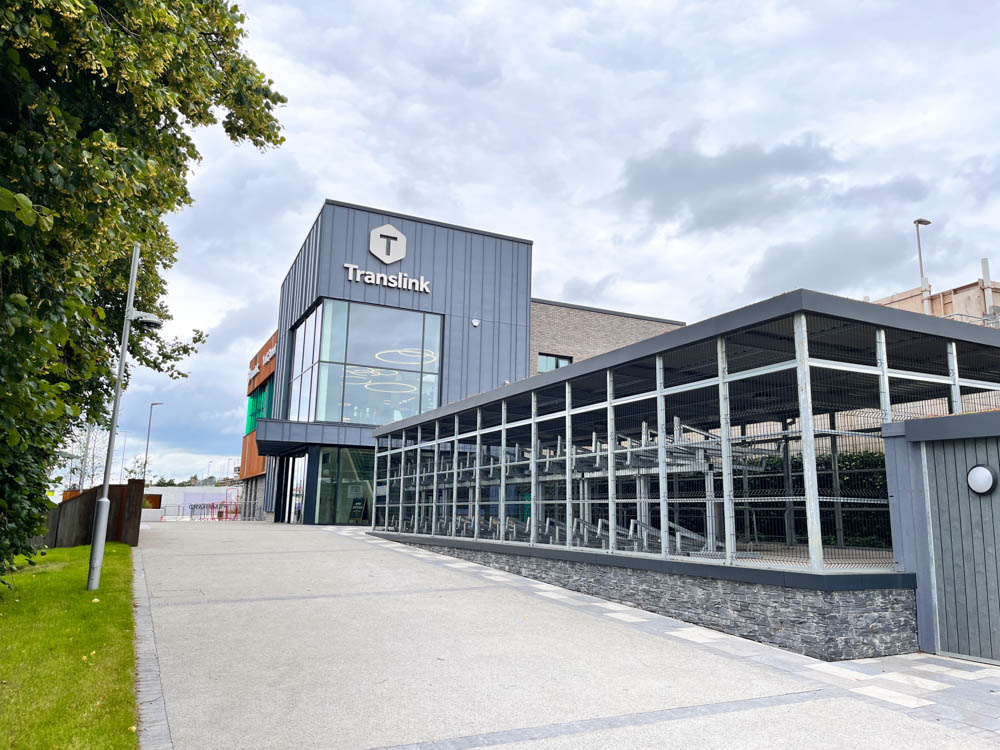

The effect is, again, a station that feels serious and a colourful yet not too “loud” of a presence in what is largely a grey industrial area. If all that sounds familiar, that’s because the new station building was designed by Gregory Architects – they also designed the new Portrush station building.
The street level entrance leads to a small, brightly lit foyer with stairs, a lift, and an escalator up to the ticket hall. As at Portrush, the new York Street ticket hall is also illuminated in the day by a skylight. The result is, once again, a bright and airy space per the trend started by Portrush.
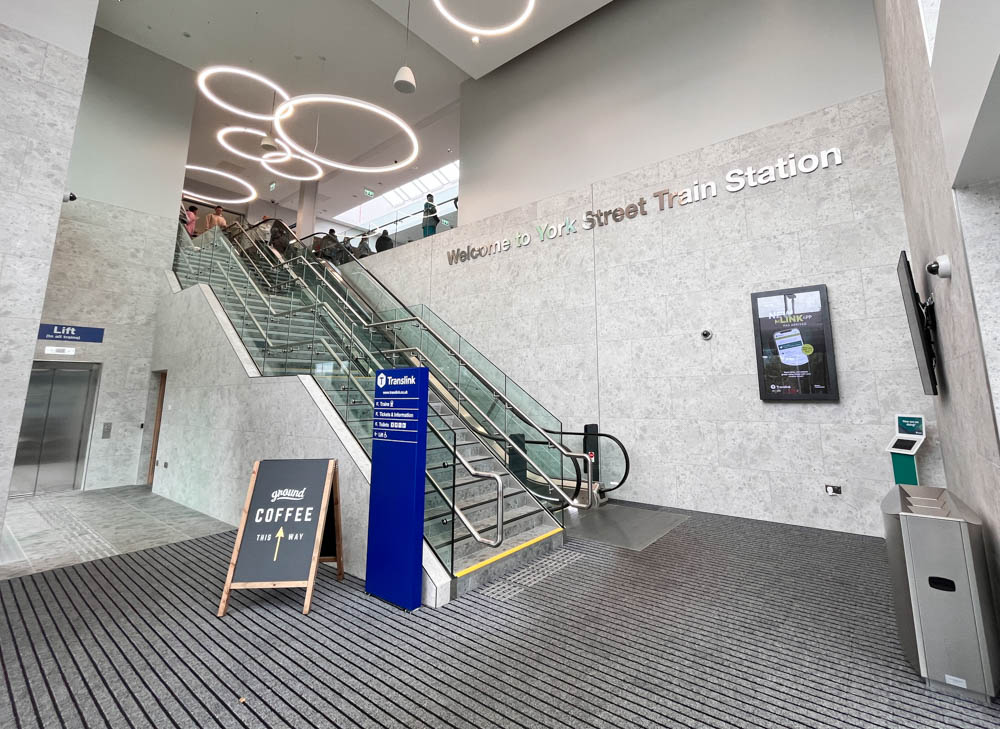

York Street is the latest beneficiary of Translink’s ticketing system upgrade works. Not only are the new ticket machines installed here, but the station has also received five brand new ticket gates – the first on the entire NI Railways network. These gates are equipped with both travel card readers and QR code scanners, an indication of the future of ticketing on the NI Railways network.
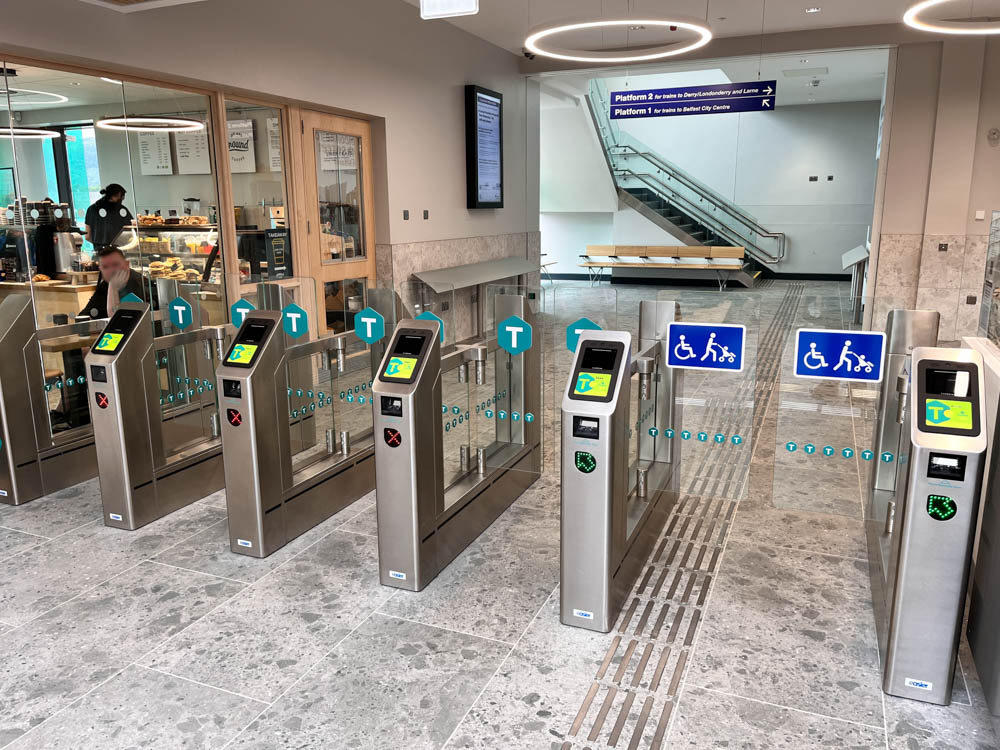
I was hoping to try out the new gates with my iLink travel card, however I was informed by staff that the software had not yet been finalised. My iLink card was validated manually by staff, and the gates were set to open automatically when a person walked through it. Not quite the experience I was hoping for, but of course this is only early days for the new system. The current setting also means we can’t see for now if Translink will set these gates to a bi-directional setting or a segregated uni-directional setting for entry & exit.
Beyond the gates is a small transitory space containing the sliding doors to Platform 2 (for northbound trains), and the stairs & lift up to the bridge for access to Platform 1 (for Belfast-bound trains). Both platforms at York Street are one of the few surviving parts of the old Yorkgate station. As part of the building works they have been resurfaced, and new canopies have been installed along the middle portions.
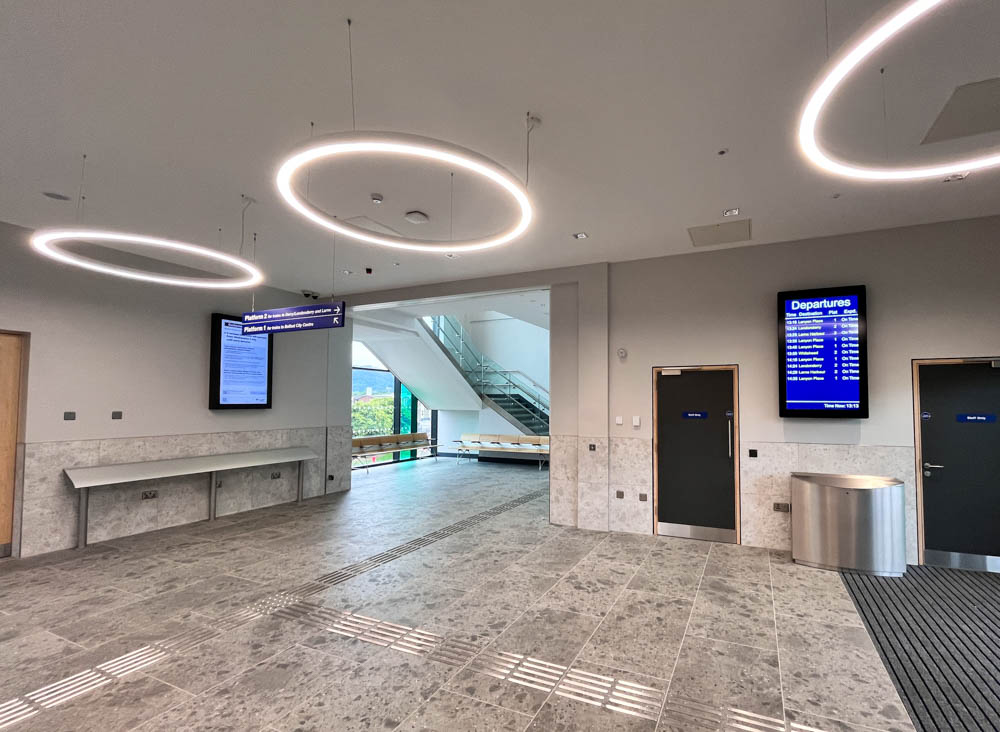
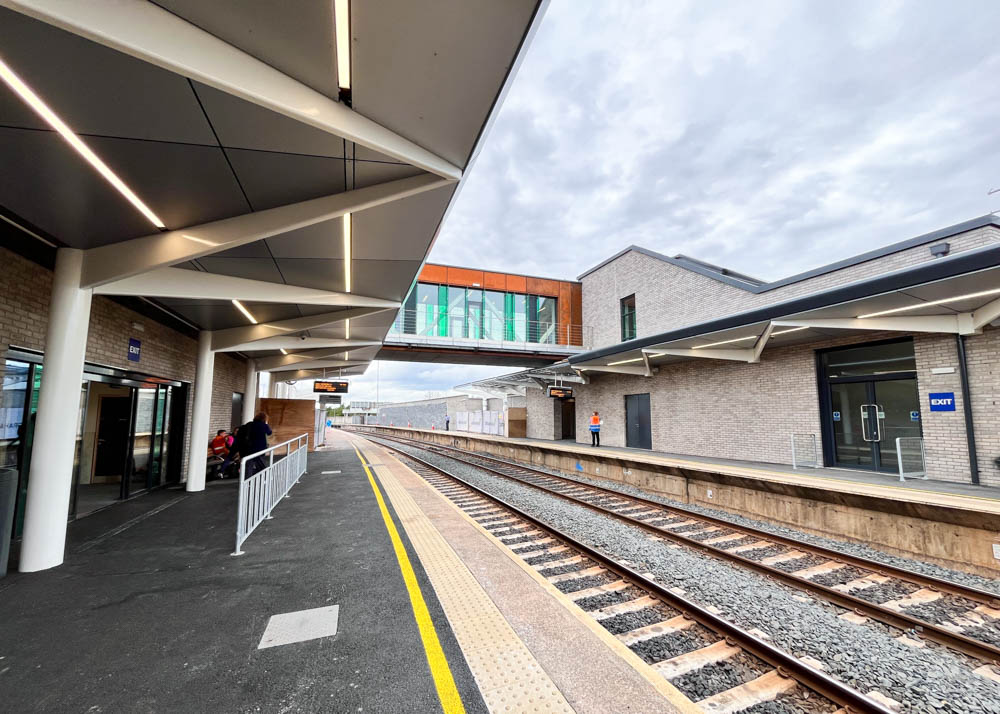
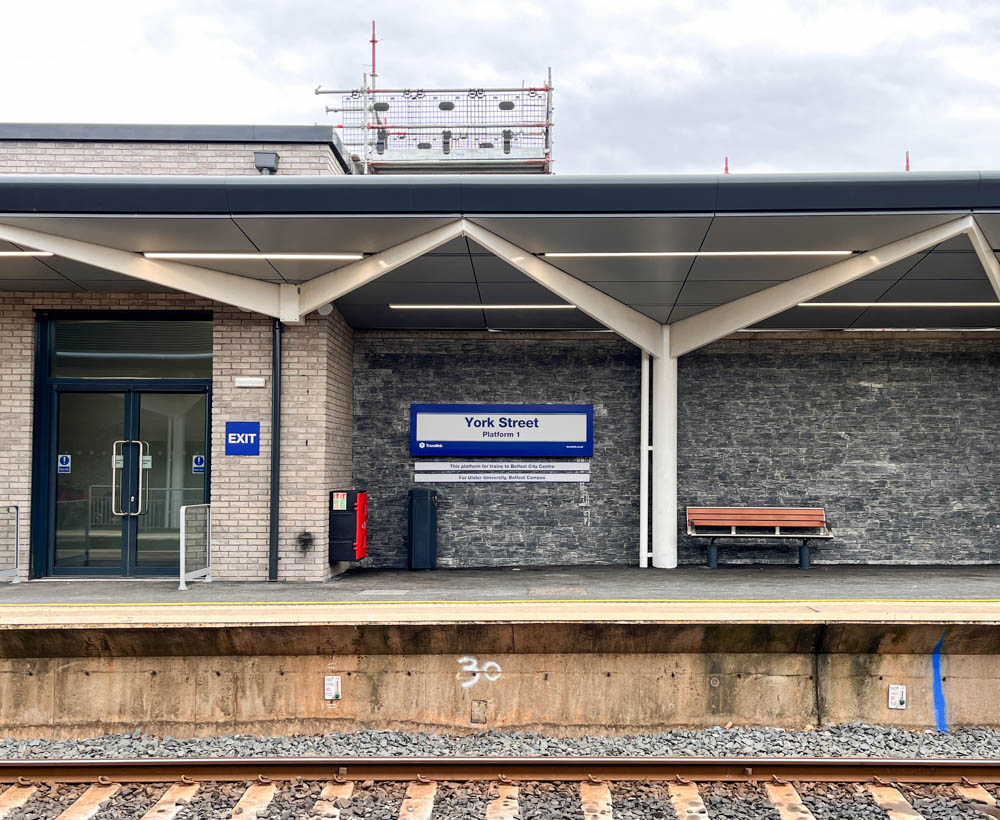
The western end of the platforms, which used to interface with the old station, still have unfinished work as these could only be completed once the old station was demolished.
What came before York Street?
The new York Street station replaces Yorkgate, a station that opened in 1992. Yorkgate wasn’t exactly a good-looking station and the location of its entrance made access difficult – the ticket hall was elevated from the street level to match the platforms, and access was via stairs and ramps up to the main entrance. I used Yorkgate exactly once and I remember it as a small and tired station.
York Street’s main entrance is now on the street level, and the new station is a big upgrade over Yorkgate. Something unchanged from the Yorkgate days, though, is the depressing streetscape in the area. While the station was rebuilt to cater for Ulster University’s new Belfast campus, the walk from the campus to the station requires crossing multiple wide laned roads (including the interchange to the M2) amidst an industrial landscape.
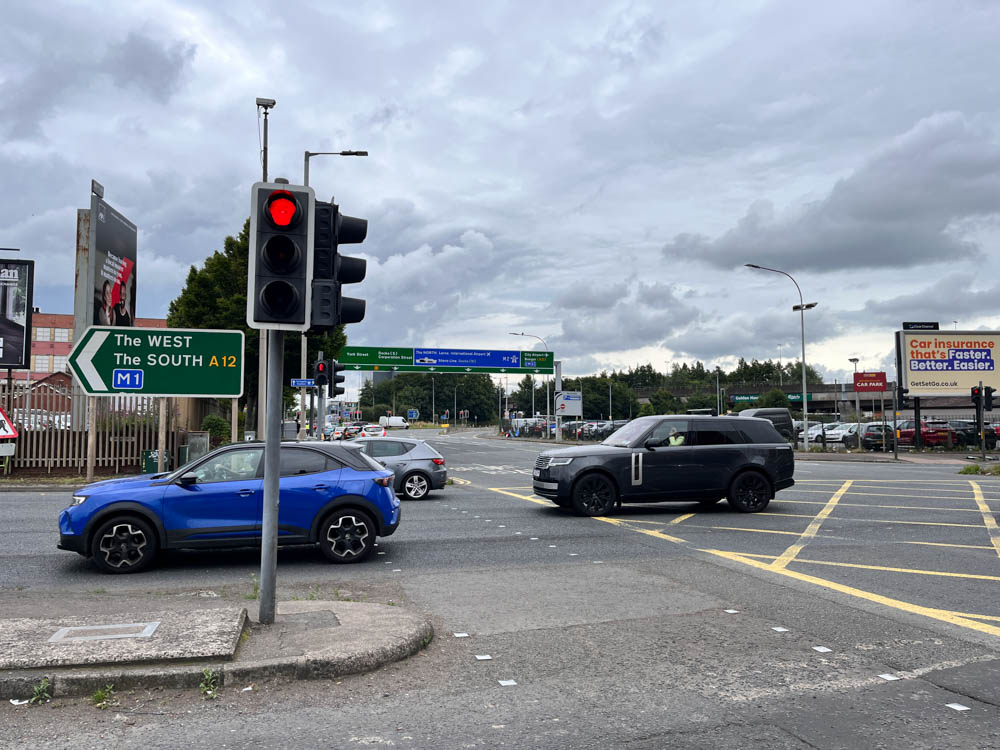
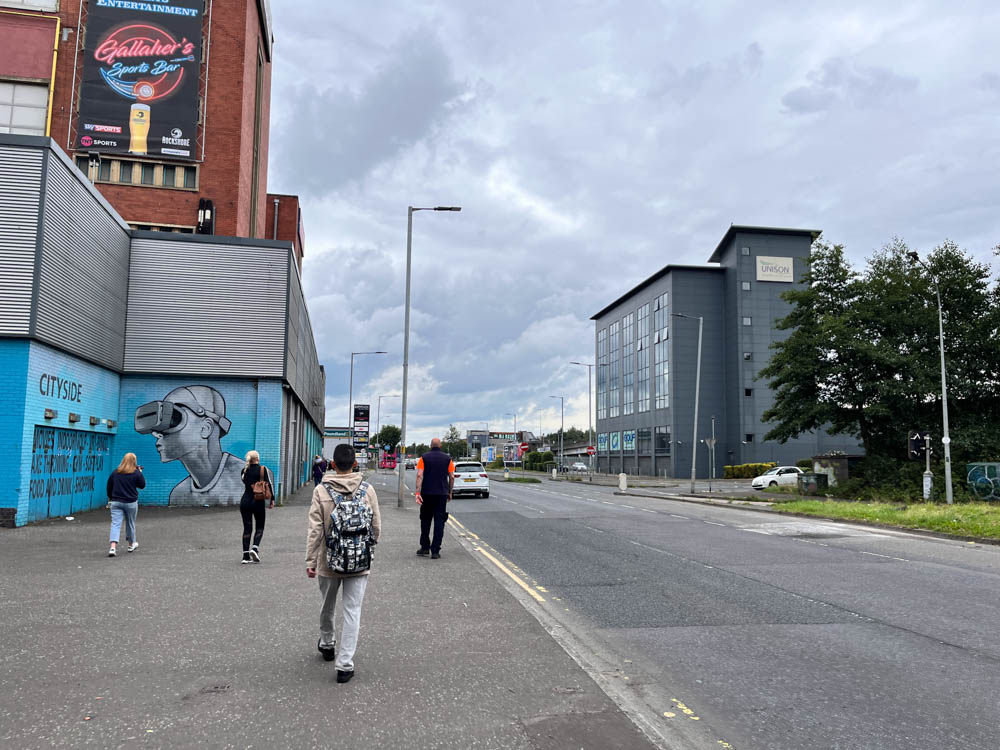
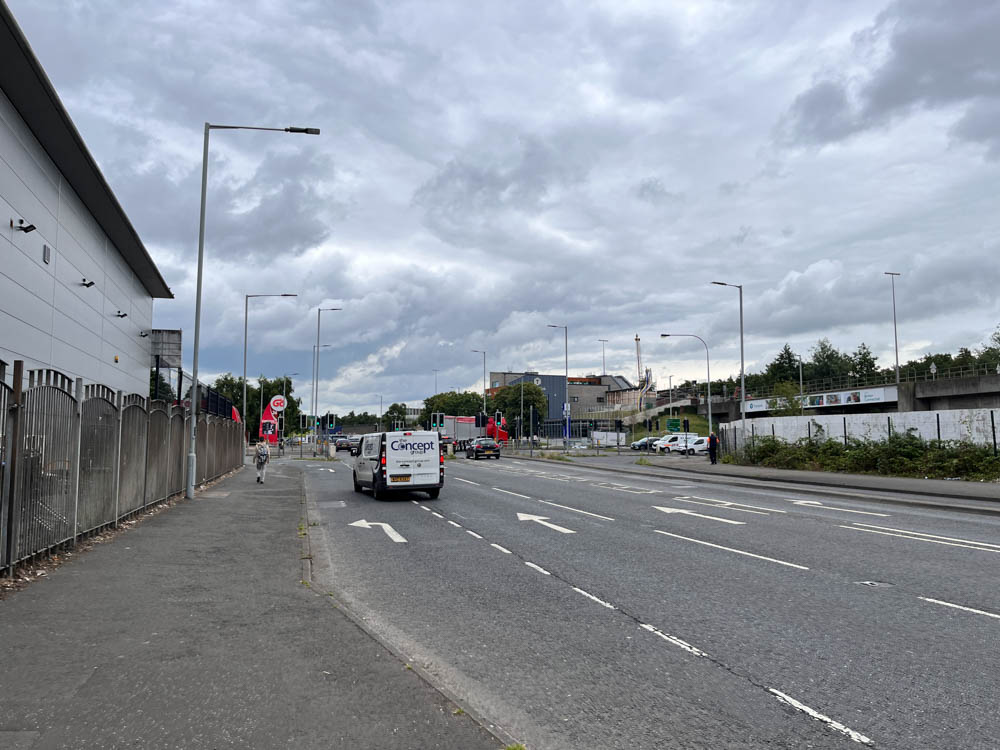
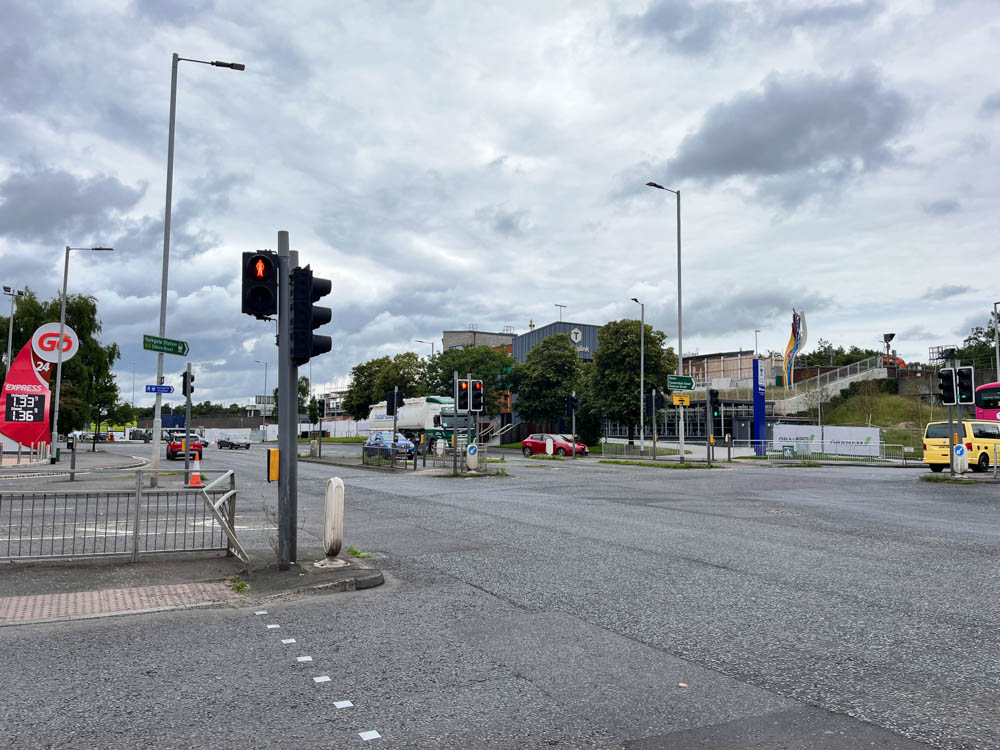
This obviously isn’t the most pedestrian friendly experience, and I really do hope that the city council puts in some work to make it safer for the multitude of UU students that are expected to use the station daily.
Belfast Grand Central Station (Opening September 2024)
The last station on this list is also the most impactful. Come 8 September 2024, and assuming everything goes to plan, daily bus commuters and visitors to Belfast will begin to grace the halls of the brand new Belfast Grand Central Station. With 8 platforms and 26 bus stands on a site spanning 860,000 square feet, it will be the largest integrated transport facility on the island of Ireland.
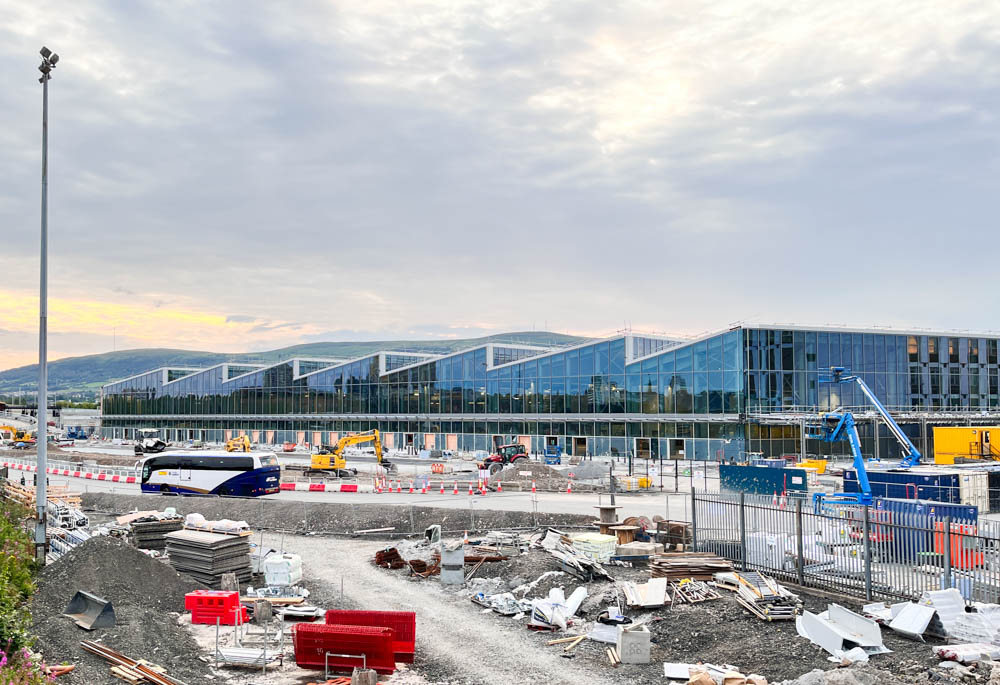
For the uninitiated, the new station is located to the west of the Europa Bus Centre and the former Great Victoria Street railway station on land that used to be an Ulsterbus depot. The new station will replace both the Europa Bus Centre and Great Victoria Street upon its opening, and the latter has already been closed to allow for track works to be completed – I covered this in a previous post.
All NI Railways services will terminate at the new station beginning 13 October 2024, including the flagship cross-border Enterprise express train to Dublin Connolly. The new Grand Central Station will also receive all Translink bus services that currently call at Europa beginning 8 September 2024. Sadly, there won’t be any Glider connections to the new station – an unfortunate omission.
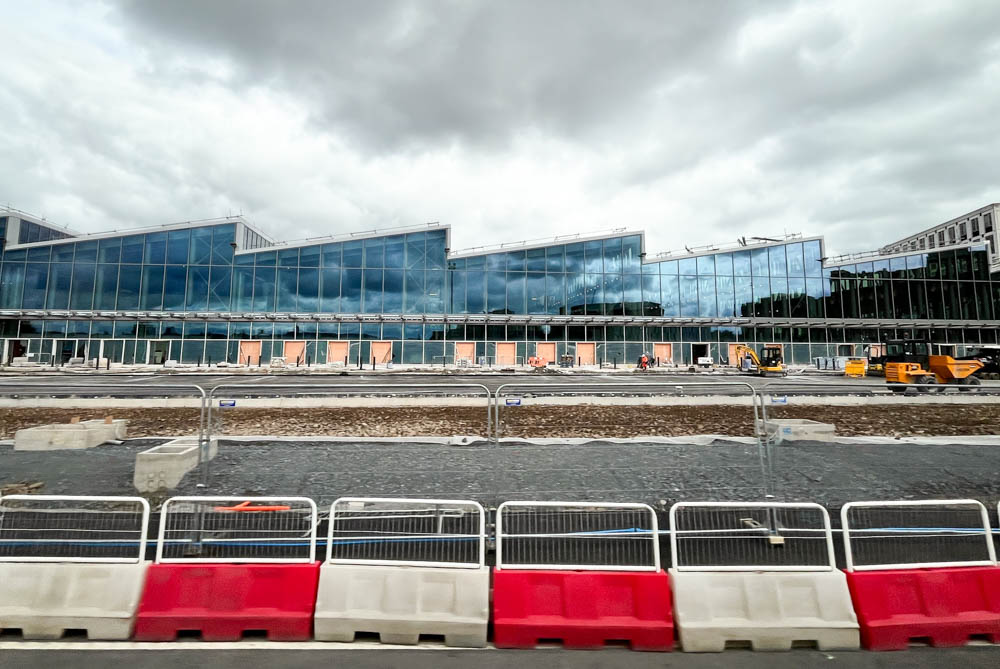
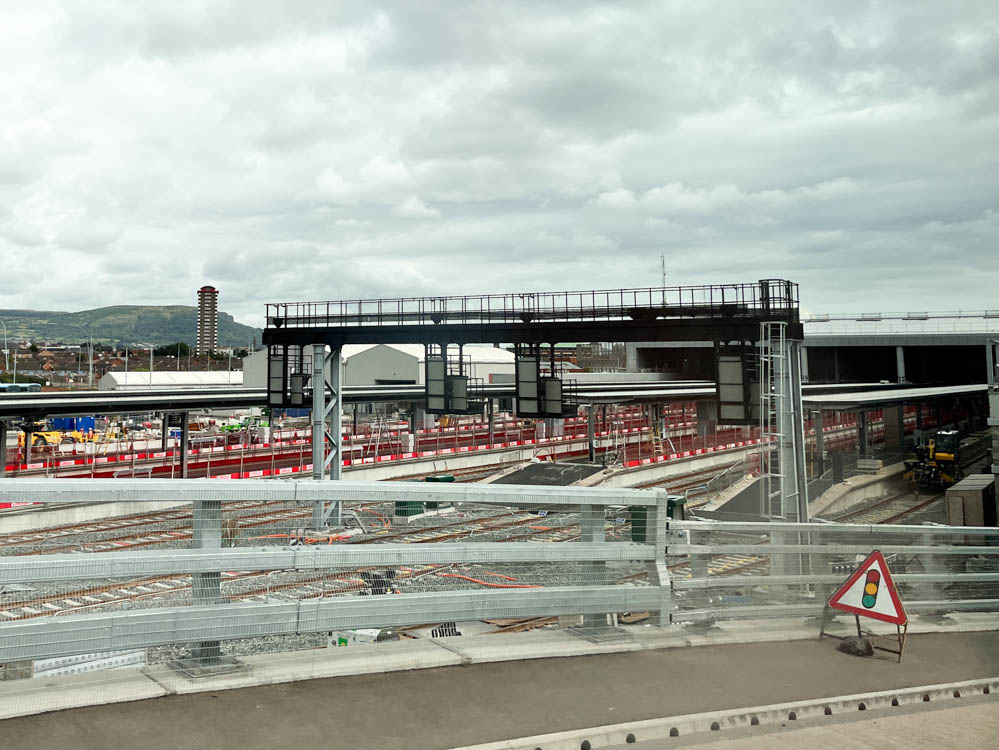
Public realm improvements
Anyone who’s walked the surrounding environs of Europa and the former Great Victoria Street station know that it’s a rather bleak urbanscape. With the new station being set further back from Great Victoria Street itself, there will be a marked increase in foot traffic passing through the surrounding streets (especially Glengall Street) to the new station after its opening. This makes the existing streetscape unacceptable in the long run.
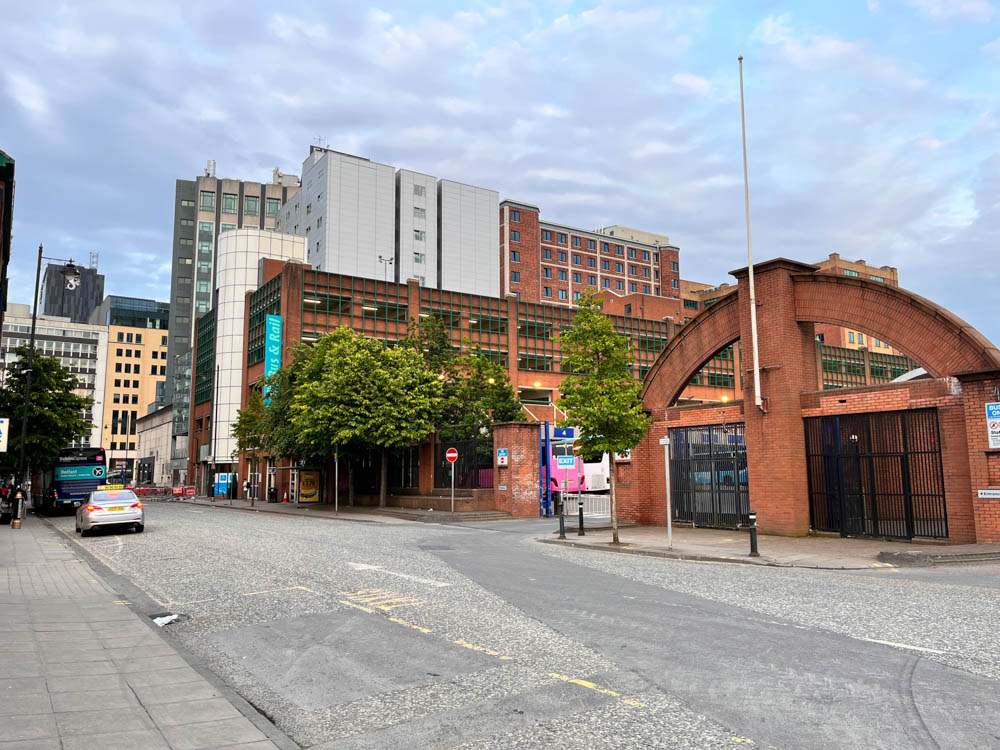
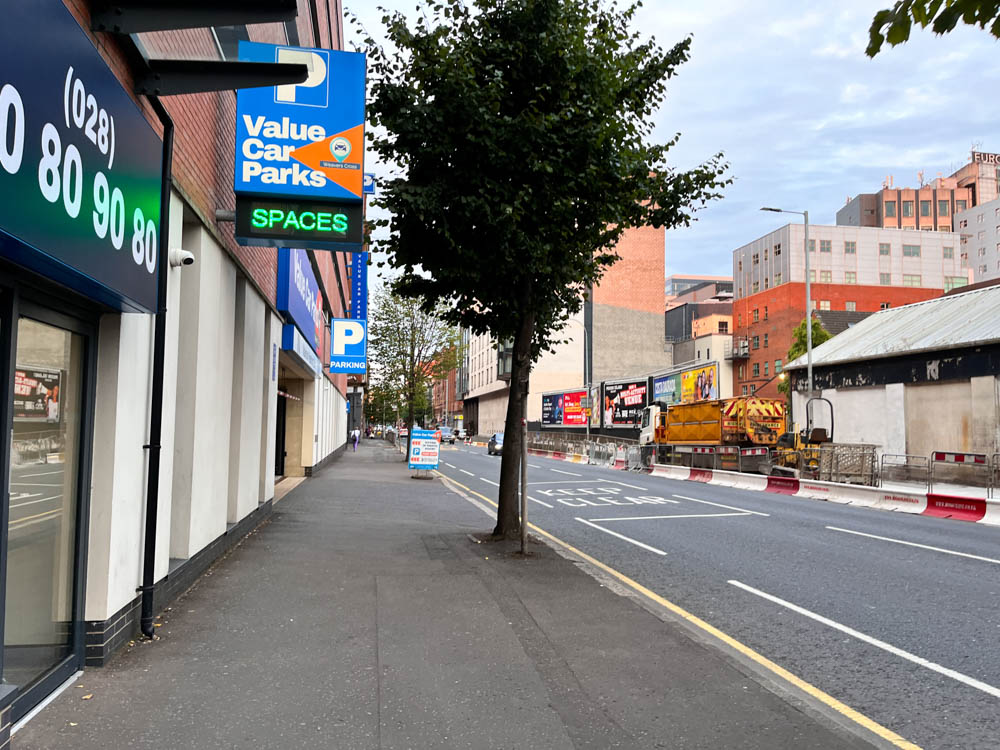
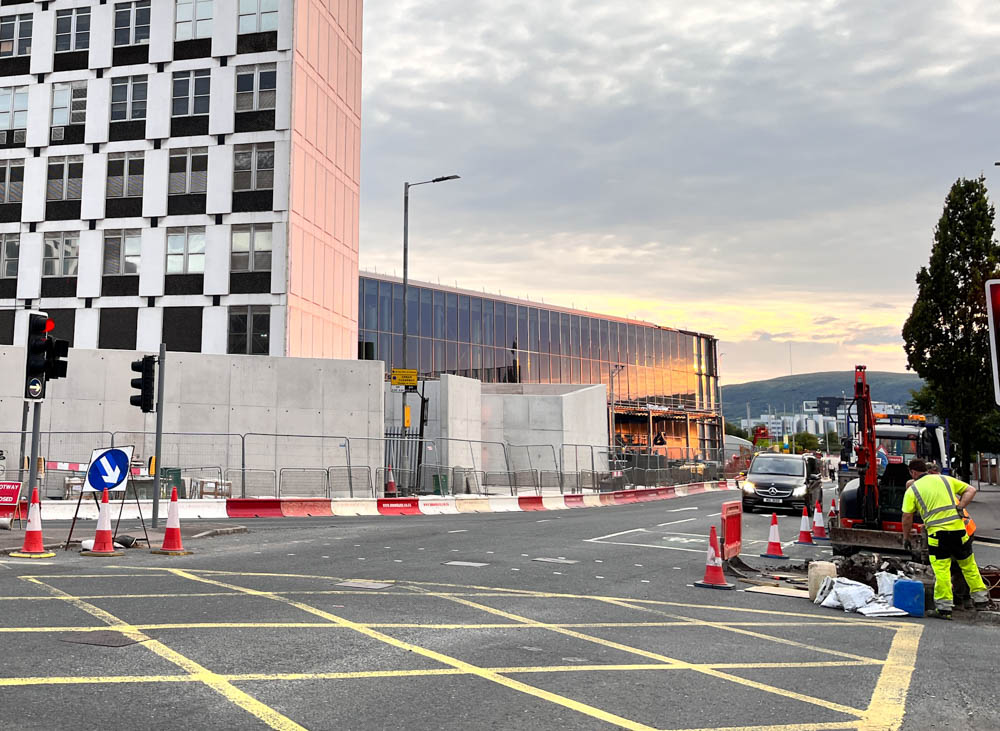
The good news is that the new station will be accompanied by improvements to the area’s public realm around Great Victoria Street (the street itself), Glengall Street, Grosvenor Road, and Durham Street. Judging by renders, the area will receive a new plaza by the station entrance, improvement works to pedestrian sidewalks, dedicated bicycle lanes, and overall beautification works that include tree planting. The 1936-built Boyne Bridge will also be demolished, bringing Durham Street back down to street level (see what I did there?).
A preview of the future of Glengall Street is currently visible on site as installation of new sidewalk tiles have begun. These look really nice and are an improvement over the previous tarred surface.
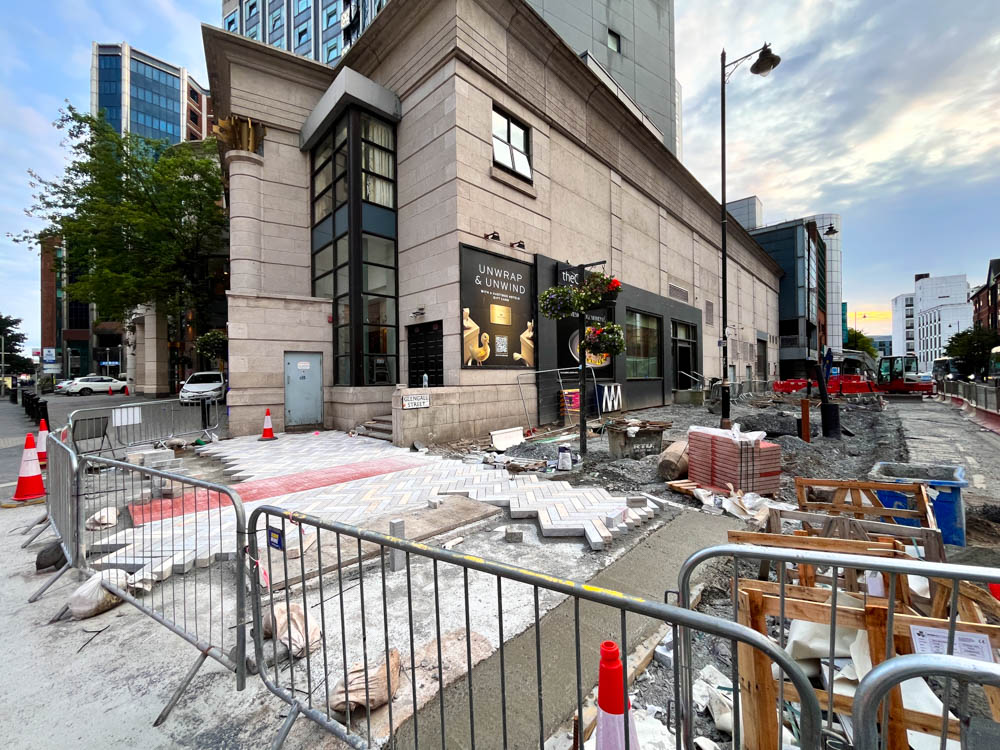
Final Thoughts
The four new stations represent the start of a new era for Northern Ireland’s railways, a system that felt like it was suspended in time for the longest time. I am feeling optimistic, but reality reminds us that revitalising the railways in NI isn’t something that is accomplished by building a few new stations. Much remains to be done, including the reopening of new lines, building of new lines, increasing track capacity and perhaps one day, electrification.
If all of that sounds like a lot, just remember that this is a region where the train line running between its two largest cities is largely single-tracked, but that is a story for another time.
Comments
4 responses to “Impressive and Timely: Northern Ireland’s 4 newest train stations”
[…] This was my first visit to Derry’s new station after countless times passing through the old station, and to say I was impressed was an understatement. You can read more about my thoughts on Derry’s new railway station here. […]
[…] is no more, having been replaced by Belfast Grand Central; Yorkgate is now York Street with a brand new station building; Belfast Central is now Lanyon […]
[…] Portrush’s brand new train station that opened in July 2019. I cover it more extensively in this post, but essentially the new station is a big upgrade over the old […]
[…] This trip was the first time I was in Belfast in 6 years, so I took the opportunity to get up to speed with York Street and NI Railways’ other swanky new stations. You can read more about that here. […]